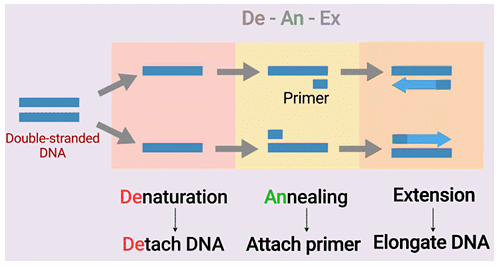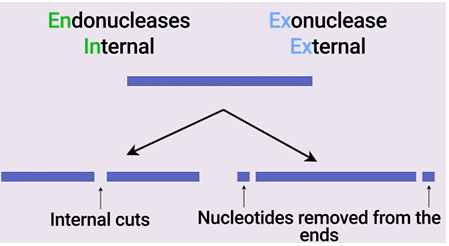Mnemonics: Biotechnology: Principle & Processes | Biology Class 12 - NEET PDF Download
This document will help you remember important information about Biotechnology: Principle & Processes in a fun and easy way. Inside, you'll find mnemonics—memory tricks—that will make it easier for you to remember key concepts, examples related to Biotechnology: Principle & Processes.
Whether you're studying for an exam, preparing for a quiz, or simply looking to enhance your understanding of Biotechnology: Principle & Processes, these mnemonics will serve as valuable memory tools. Utilize them alongside your regular study routine to reinforce your knowledge and increase your recall ability.
Happy mnemonic learning!
Polymerase Chain Reaction
Polymerase chain reaction (PCR) is a method widely used to rapidly make millions to billions of copies of a specific DNA sample. It has three steps:
Denaturation: In this step, double-stranded DNA template is converted to single-stranded DNA molecules by breaking the hydrogen bonds between complementary bases, by the application of heat.
Annealing: In this, primers are allowed to anneal to each of the single-stranded DNA templates.
Extension: In this, a thermostable DNA polymerase is used to polymerise the single stranded DNA leading to formation of two double stranded DNA from a single double-stranded DNA.
Mnemonic: De-An-Ex

Naming the Restriction Enzymes
Nomenclature of restriction enzymes can be confusing at times. Do not worry. We can learn how enzymes are names this way. Its very simple - first letter is Genus of the species from which the enzyme is extracted. Next two letters are the first two letters of the name of the species from which the enzyme is extracted. Then next denotes the strain and lastly the Roman numerals denote the order of discovery.
Mnemonic: ECoRI

Endonucleases and Exonucleases
Endonucleases cut DNA at specific sites within the DNA sequence. Whereas, exonucleases cut DNA at its ends.
Mnemonic: En-In, Ex-Ex

|
78 videos|279 docs|174 tests
|






















